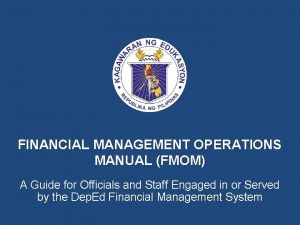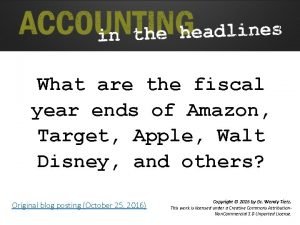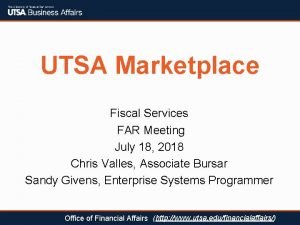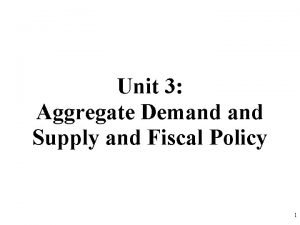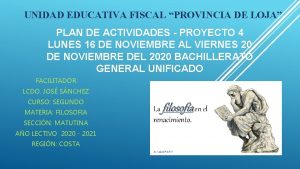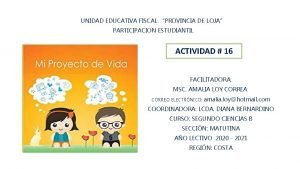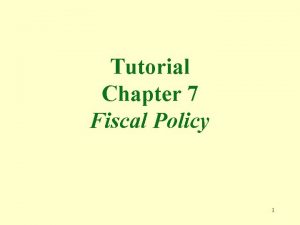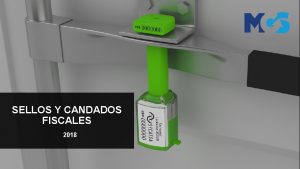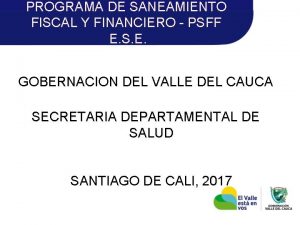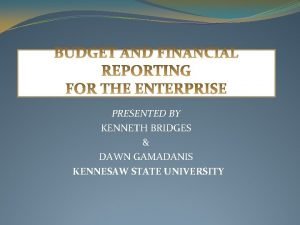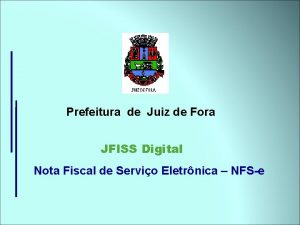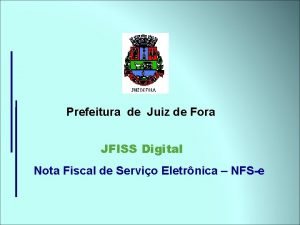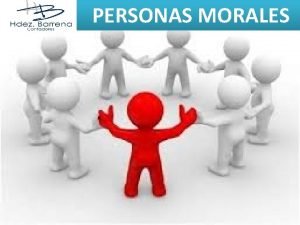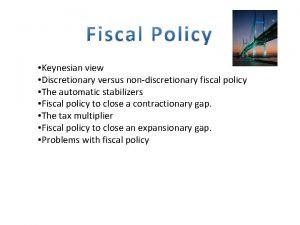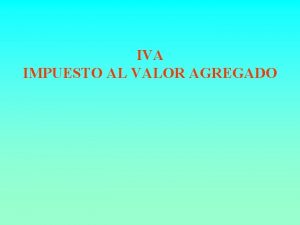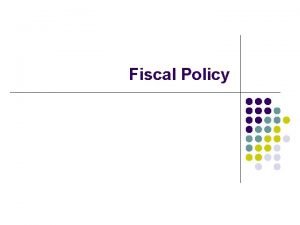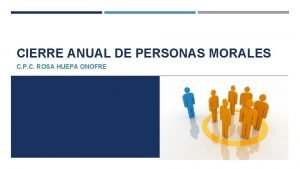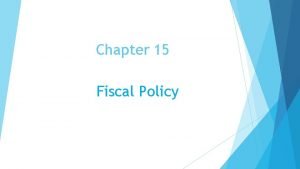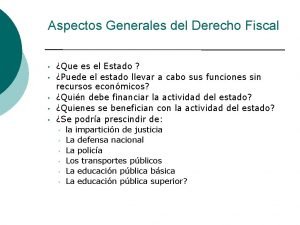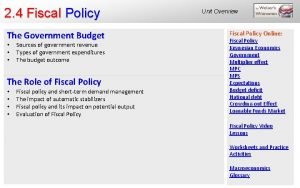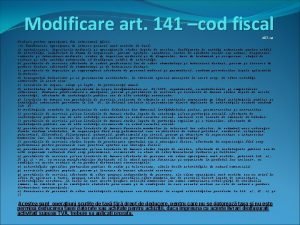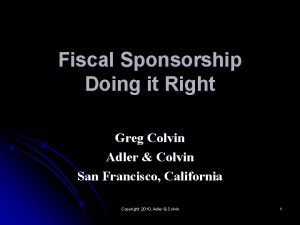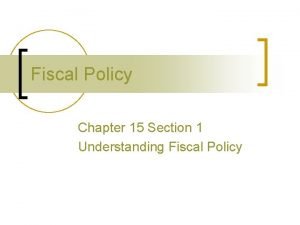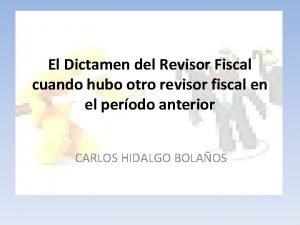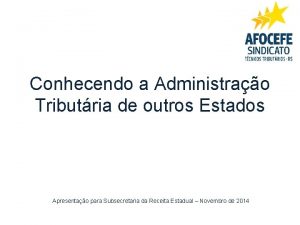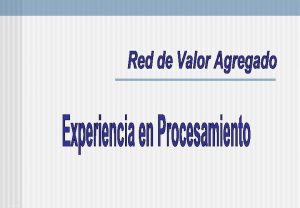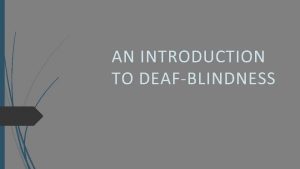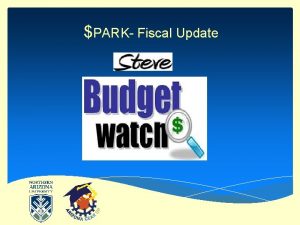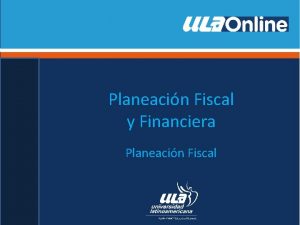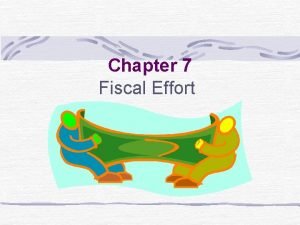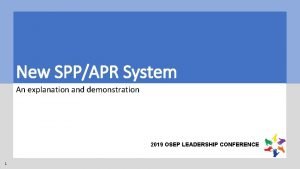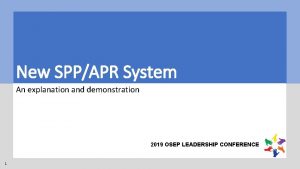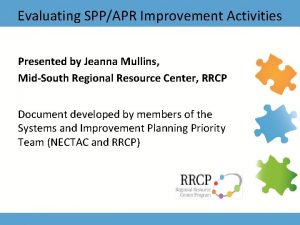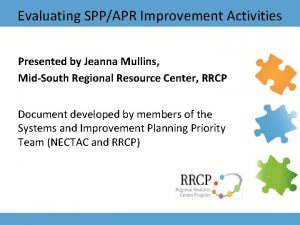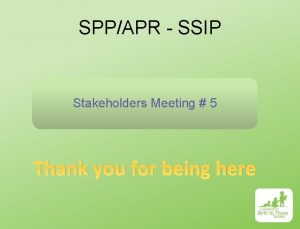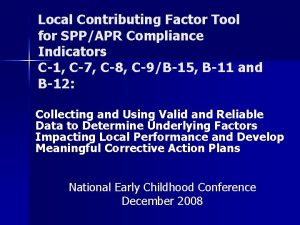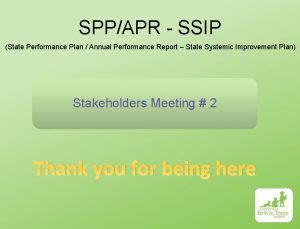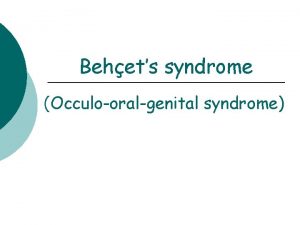CHARGE SYNDROME CHARGE Syndrome Foundation SPPAPR Fiscal Management




















































- Slides: 52

CHARGE SYNDROME CHARGE Syndrome Foundation

SPP/APR Fiscal Management Targeted Technical Assistance Data Collection General Supervision Improvement, Correction, Incentives, & Sanctions Dispute Resolution System Policies, Practices and Procedures Monitoring Activities 2

Academics Behavior Transition 3

Academics • • Active implementation of evidence-based instruction Local capacity building Technical and adaptive leadership Comprehensive and efficient assessment system Behavior • • • Active implementation of evidence-based behavioral programming Local capacity building Culturally responsive instruction Positive school/class climate Comprehensive and efficient assessment system Transition • • • Active implementation of evidence-based transition practices Local capacity building Systemic and coordinated supports (including wraparound) Consistent attendance Extracurricular and/or employment opportunities

• If you have met one person who is deafblind, you have met one person who is deafblind • If you have met one person with CHARGE Syndrome, you have met one person with CHARGE Syndrome

CHARGE - General Information • Genetic mutation CHD 7 • Clinical diagnosis • 1 in 10, 000 • Diverse – mild to more involved characteristics (medical) • Determined – “I want/need” • Unique • CHARGE Conferences

Some Statistics- 2016 Annual DB Census National NC • Annual count – 9635 • CHARGE Syndrome - 924 • Intervener – 668 • Additional Disabilities – 8424 • DB (Part B) – 1486 • MU - 3387 • Annual count – 289 • CHARGE Syndrome – 28* • Intervener – 35 • Additional Disabilities – 278 • DB (Part B) – 33 • MU - 175

Eligibility Category – NC Census • MU = 11 • Deaf-Blind = 8 • Intellectual Disability = 3 • OHI = 2 • DD = 3 • 23 identified as having Intellectual Disability • 21 have Communication/Speech Disability

CHARGE • C = Coloboma (eye) 80 – 90% • H = Heart 75% • A = Choanal atresia 50 -60 % • R = Retardation of growth and development 90% • G = Genitourinary anomalies • E = Ear anomalies and/or deafness (middle and inner ear) 90 – 95% • These features are no longer used to make the diagnosis

Coloboma • May effect the iris, retina, macula, optic disk, or eyelid • Iris - No to minimal affect on visual field or acuity (usually) • Retina – Loss in the visual field, usually in the upper field • Macula or optic disk – Significant affect on visual acuity • May be sensitive to bright lights • Usually visually perform much better than testing would indicate • Magnifiers may be helpful • 80 -90% of individuals with CHARGE have colobomas

National Eye Institute – Google images

Coloboma - Iris

“Look at the camera”

Elements of Vision • Lighting –amount of light, changes in lighting (bright to dark), problems (glare, icky light) • Contrast – high/low, color, figure/ground (clutter) • Size – big print, small print, font types, distance, optics

Vision Myths • The child must be able to communicate for the eye care professional to obtain a reliable visual acuity • Distance and near vision are closely related • Functional vision is closely related to visual acuity • Eyeglasses always correct vision to 20/20

The other “C’s” of CHARGE Syndrome • Cranial Nerve Abnormalities • Possible facial palsy • Breathing and swallowing may be affected • Choanal Atresia • Breathing impacted

CHARGE Ear/Hearing • Unusual shape • Mixed hearing loss, often severe to profound • Fluctuating with infections/fluid • May respond to cochlear implant • May be progressive • Possible balance problems

Hearing Testing • Audiogram • Auditory Brainstem Response • Functional Hearing Assessment

Heart/Medical • Usually multiple and/or complex medical conditions • Surgery early and often • Trach • Feeding tube • Cleft palate • Allergies • Reversed sleep pattern • Swallowing problems

The Bubble • World only exists as far as they can see and hear • Incidental learning is limited • Distorted or missing visual and auditory information • Experiences • Expectations • Health problems

CHARGE “Behavior” • All behavior is communication • Can tell you what is wrong/missing from their environment – Tim Hartshorne, 2017 CHARGE Conference • May be sensory cause – pain, temperature, insecure, can’t see/hear • Thought to be perseverative (OCD), may be just persistent • Anxious about completing a task, having enough work • Change the perspective (it’s not this, it’s that) • Routines but flexibility when needed

Is it Autism? Autism Deaf-Blind • Uninterested • Self-Stim • Over stimulated • Uninterested/immature • Reluctance • Unable • Regulation • Under stimulated • Functional • Unique physical needs

Obsessive Compulsive Disorder and CHARGE • Recurrent and persistent thoughts • Repetitive behaviors • True OCD – irrational thoughts leading to irrational behavior • CHARGERs have circumstances that lead to anxiety (exposure happens all the time and is unavoidable. Defensive response to deal with the anxiety

• “A lot of what looks like OCD in CHARGE is really just a reaction to having multi-sensory impairments” David Brown • Creative responses to abnormal , anxiety-provoking circumstances • CHARGE Syndrome and Behavior: Diagnosis and Intervention T. Hartshorne, D. Brown, M. Schmittel, S. Madhaven-Brown, S. Muhn July 29, 2017 CHARGE Syndrome Conference

Multi-impaired Sense of • Vision • Hearing • Touch • Proprioception • Temperature • David Brown and Julie Maier – CHARGE Conference 2015 • Pain • Vestibular • Smell • Taste

Senses • Distance senses • Vision • Hearing • Smell • Impact senses • Taste • Touch • Kinesthetic

Senses - Proprioceptive • Proprioceptive – deep pressure • • Walking Flapping Finger posturing Hit self Toe walking Mouthing Positions – on back, floor, couch

Senses - Vestibular • Vestibular – Head movements • Controlled by the inner ear • Spinning (self) • Spinning objects • Upside down • Repetitive movements

More on those weird positions • Vestibular sense – have none or overactive • Visual field loss – upper, lower, sides • Low muscle tone – positioning, tire easily • Poor proprioceptive sense – no idea where you are in space • Tactile – too much or not enough, defensive • Comfort – Reflux, feeding tubes,

Sensory Integration • Process of organizing sensory input so that the brain produces useful body responses, perceptions, emotions, and thoughts. • • • Smells Touch Picky eater Meltdowns Fearful and anxious Loud noises

Sensory Integration • Movement • Space mountain • Swinging • Deep pressure • Unusual Positions • Stabilization • Enhance vision • Oral Motor • Occupational Therapist, Physical Therapist • Speech-Language Therapist

Routine Transitions made manageable • What they see, what they hear • Extra time to process directions • People – they know, help them, consistently, not too many • Environmental cues – know where they are, barrier free routes, consistent landmarks or cues • Time – repetitions

Concepts • A concept is a mental representation, image or idea of tangible and concrete objects (e. g. , a chair, a dog) and intangible ideas and feelings (e. g. , colors, emotions). • A skill is the ability to do something (e. g. , tying a shoe, using vision to find an object). • Concrete concepts: relate to objects or things that are tangible (e. g. , a car, a chair). • Semi-concrete concepts: relate to an action, color, position, or something that can be demonstrated but not held in one’s hand (e. g. , jumping, behind, red). • Abstract concepts: include feelings (e. g. , love, nervousness). • Sighted and hearing children receive a constant flow of visual and auditory information which facilitates the development of concepts. For children with combined vision and hearing loss, the flow of information is incomplete. Concepts don’t develop naturally or easily. Alternate strategies must be used to teach these children concept development.

Areas of concept development affected by deafblindness: • Objects exist: children with deaf-blindness have difficulty learning about the existence of objects because they can not see or hear objects clearly. • Objects have permanence: children with combined vision and hearing loss can’t observe objects and people at a distance and know that things exist beyond their fingertips. • Objects differ: children with deaf-blindness won’t know that one object is different form another unless they can touch and explore them. • Objects have names or labels: children with both a hearing and vision loss need to use touch to support language learning. • Objects have characteristics: children with deaf-blindness will have difficulty identifying the different characteristics of objects because of the lack of access to information about those objects. • Objects have functions or use: children with combined vision and hearing loss can’t observe how objects are used, or hear the sounds associated with the functions of objects.

To Build Concepts • Use activities that are meaningful to the child • Use activities that the child enjoys • Attach language to all experiences • Build on language that is already known to the child • Use a total communication approach that is appropriate for the child • Remove variables that may cause confusion for the child • Generalize the concepts to a variety of situations. • Concept slides from © 2006 SKI-HI Institute at Utah State University. • http: //www. sparkle. usu. edu/Topics/concept_development/index. asp

More on Concepts • Need to be taught through more than one sensory mode (vision, hearing, touch, smell, taste, movement) • Need to be taught trough more than one communication mode • Multiple opportunities to learn and interact in an enhanced context to understand what is going on around him/her • Adaptations and accommodations for EVERY activity • Hands on participation

Strategies

In the classroom • Seating – to best use residual vision and hearing • If they are sitting alone, they may not (probably aren’t) getting much, if any information • The advantages of having a one-on-one • Break down the information • Hands on • Time – to process information, form response, plan and perform response

Seating for all activities • How does the child use their vision? • • Have you seen a FVA? Does have /Did have TVI services? Fluctuating vision Glasses not always “fix” vision to 20/20 • Hearing • • Hearing aids, cochlear implants, BAHA FM system, captioning Background noise Can the child hear the 1: 1? • How does s/he feel today? Sensory breaks.

Communication • Pre-symbolic • Objects • Pictures • Speech • ASL • Tactile Sign • Print in palm • Communication devices (Go. Talk, computer, Quick Talker, Talk ‘n Tote)

Sign Language • Needs to be at an understandable level – vocabulary, speed, size • In the visual field • Expressive • Receptive

Respect Communication • If the child’s behavior is saying “I need to move” – they need to move • Communication may not be traditional • “Bad” behavior has gotten quick responses in the past • Concept of “wait or later” • Introduce the elements of conversation - topic, turn taking

Infant and Toddler Development • Inconsistent responses to sounds and visual images • Lack distance perception of the environment – no curiosity • Balance problems • Delays in motor development • Tactile sensitivity • Overactive startle response • Difficulty in interacting with things in the environment • Difficulty in generalizing experiences

• Communication is non-typical or delayed • Gaze at lights • Fixate on a spinning toy or other object • Fear and confusion • Don’t anticipate change • If alone for very long, not seek or interact with toys or materials • Limited incidental learning (reproduce sounds, identify objects)

Assistive Technology • In the classroom • In the home • In the community • Communication • Mobility • Independence • Daily Living • Social

Assistive Technology • Everyday Tools • • Smart phones Ipads and tablets Closed captioning Descriptive video

Evaluation and Training • Look at the strengths not deficits • What does he want to do? Preferences • Natural settings to evaluate and teach • Support to enhance skills • Viewpoint that allows the student to have a fulfilling life (can do vs cannot do)

Always presume competence

Resources • CHARGE Syndrome Organization - chargesyndrome. org • CHARGE Syndrome Conference information https: //www. chargesyndrome. org/for-families/conferences/ • Perkins - http: //www. perkinselearning. org/scout • Texas School for the Blind and Visually Impaired – tsbvi. edu • National Center on Deaf-Blindness - nationaldb. org • NC CHARGERs – Kim Lane, kimandmike@gmail. com


NC Deaf-Blind Project • Dottie Snyder – NCDPI Statewide Consultant for Deaf-Blind Dorothy. Snyder@dpi. nc. gov • Andrea Blackwood – East Carolina Teacher Support Program Technical Assistance Coordinator blackwooda@ecu. edu • Debra Pickens – ECAC Family Engagement Specialist dpickens@ecacmail. org

CEU Questions • Do you work with or have a student with CHARGE in your LEA? • What do the letters in CHARGE stand for? • What are some resources you would use to find information on CHARGE Syndrome • What are some accommodations that you may need to consider for a child with CHARGE Syndrome in a classroom setting? • E-mail response to Dottie at Dorothy. Snyder@dpi. nc. gov by April 13, 2018
 Shallow pad foundation
Shallow pad foundation Composition of urine slideshare
Composition of urine slideshare Financial management operations
Financial management operations Difference between charge and electric charge
Difference between charge and electric charge Difference between charge and electric charge
Difference between charge and electric charge When does amazon's fiscal year end
When does amazon's fiscal year end Fiscal services utsa
Fiscal services utsa Cost-push inflation
Cost-push inflation Example fiscal policy
Example fiscal policy Tax multiplier formula
Tax multiplier formula Unidad educativa fiscal provincia de loja
Unidad educativa fiscal provincia de loja En el sector superior izquierdo escribe las profesiones
En el sector superior izquierdo escribe las profesiones Components of fiscal policy
Components of fiscal policy Crowding out effect of fiscal policy
Crowding out effect of fiscal policy Candados fiscales
Candados fiscales Fiscal incentives for industrial promotion (revised)-2013
Fiscal incentives for industrial promotion (revised)-2013 Programa de saneamiento fiscal y financiero
Programa de saneamiento fiscal y financiero Ksu fiscal services
Ksu fiscal services Nota fiscal juiz de fora
Nota fiscal juiz de fora Nota fiscal juiz de fora
Nota fiscal juiz de fora Que es deficit fiscal
Que es deficit fiscal Como actualizar perdidas fiscales
Como actualizar perdidas fiscales Money market graph expansionary monetary policy
Money market graph expansionary monetary policy Instruments of fiscal policy
Instruments of fiscal policy Como actualizar perdida fiscal
Como actualizar perdida fiscal Expansionary gap
Expansionary gap Bcm2 sii login
Bcm2 sii login Fiscal policy
Fiscal policy Fiscal policy definition
Fiscal policy definition Fiscal risk
Fiscal risk Fiscal demand side policy
Fiscal demand side policy Fiscal
Fiscal Fiscal policy definition
Fiscal policy definition Types of fiscal policy
Types of fiscal policy The fiscal ship
The fiscal ship Instruments of fiscal policy
Instruments of fiscal policy Crowding out effect
Crowding out effect Art 97 lisr
Art 97 lisr Demand side fiscal policy definition
Demand side fiscal policy definition Aspectos generales del derecho fiscal
Aspectos generales del derecho fiscal Fiscal federalism definition ap gov
Fiscal federalism definition ap gov Expansionary monetary policy aggregate demand
Expansionary monetary policy aggregate demand Crowding out effect of fiscal policy
Crowding out effect of fiscal policy Example of expansionary fiscal policy
Example of expansionary fiscal policy How much does wanda earn per hour
How much does wanda earn per hour Art 141 cod fiscal
Art 141 cod fiscal Adler colvin
Adler colvin Goals of fiscal policy
Goals of fiscal policy Fiscal vs monetary policy
Fiscal vs monetary policy Dictamen del revisor fiscal
Dictamen del revisor fiscal Posto fiscal de aracati
Posto fiscal de aracati Goals of fiscal policy
Goals of fiscal policy Caratula fiscal
Caratula fiscal


